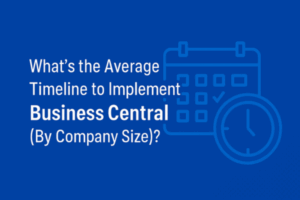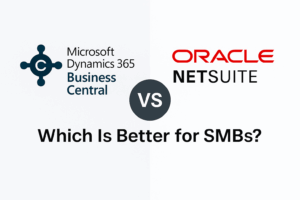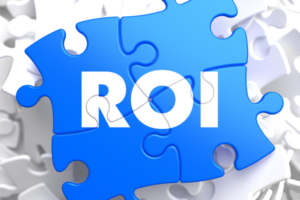Understanding the Basics: ERP and Inventory Management in Manufacturing
Inventory management is a critical aspect of manufacturing operations, and it plays a pivotal role in ensuring smooth production and timely delivery of goods to customers. Before delving into the role of ERP in inventory management, it is essential to understand the basics of ERP and how it relates to the manufacturing industry.
What is ERP?
ERP, or Enterprise Resource Planning, is a software system that integrates various business functions and processes into a unified platform. It enables companies to streamline and automate their operations, including finance, human resources, supply chain, customer relationship management (CRM), and of course, inventory management. ERP systems serve as a central hub of information, allowing businesses to have real-time visibility and control over their operations.
The Importance of Inventory Management in Manufacturing
Inventory management is the process of overseeing the flow of goods, from raw materials to finished products, within a manufacturing company. Effective inventory management ensures that the right products are available at the right time, in the right quantity, and at the right cost. It involves activities such as procurement, storage, tracking, and optimization of inventory levels.
In the manufacturing industry, inventory management is crucial for several reasons:
- Meeting Customer Demand: By maintaining optimal inventory levels, manufacturers can fulfill customer orders promptly, leading to increased customer satisfaction and loyalty.
- Cost Control: Inventory represents a significant investment for manufacturing companies. Effective inventory management helps minimize holding costs, such as storage, insurance, and depreciation, while avoiding excess stock that ties up capital.
- Production Efficiency: Accurate inventory management ensures that materials and components are available when needed, minimizing production delays and maximizing efficiency.
- Supply Chain Optimization: Integration of inventory management with other supply chain functions enables manufacturers to synchronize demand and supply, reduce lead times, and minimize stockouts or overstock situations.
The Intersection of ERP and Inventory Management in Manufacturing
ERP systems have evolved to include robust inventory management functionalities, making them an ideal solution for manufacturers. By integrating inventory management within the ERP framework, manufacturers can achieve seamless coordination between various departments and streamline their inventory processes.
ERP systems offer features such as:
- Real-time Inventory Tracking: ERP systems provide real-time visibility into inventory levels, enabling manufacturers to monitor stock levels, track movements, and make informed decisions about replenishment and production schedules.
- Demand Forecasting: ERP systems leverage historical data and advanced algorithms to forecast demand accurately. This helps manufacturers optimize inventory levels and avoid stockouts or excess inventory.
- Material Requirements Planning (MRP): ERP systems incorporate MRP capabilities, which enable manufacturers to calculate the exact quantities of materials needed for production based on demand forecasts and existing inventory levels.
- Order Management: ERP systems facilitate efficient order management by automating order processing, tracking, and fulfillment, ensuring that inventory is allocated correctly and delivered on time.
- Integration with Supply Chain: ERP systems seamlessly integrate with suppliers and other supply chain partners, enabling manufacturers to achieve end-to-end visibility and control over inventory, from procurement to delivery.
In the next section, we will explore in more detail the crucial role that ERP plays in inventory management for manufacturing companies, and the specific advantages of leveraging ERP systems in this context.
The Role of ERP in Inventory Management
ERP systems play a pivotal role in streamlining and optimizing inventory management processes for manufacturing companies. In this section, we will delve into the specific functions and advantages of using ERP for inventory management.
Why ERP is Crucial for Inventory Management
- Centralized Data Management: ERP systems provide a centralized repository for inventory data, consolidating information from various sources and departments. This allows for real-time visibility and access to accurate and up-to-date inventory information.
- Accurate Demand Forecasting: ERP systems leverage historical data, market trends, and forecasting algorithms to generate accurate demand forecasts. This helps manufacturers plan their inventory levels and production schedules accordingly, avoiding stockouts or excessive inventory.
- Efficient Inventory Tracking: ERP systems enable manufacturers to track inventory movements, from the receipt of raw materials to the shipment of finished goods. This ensures accurate inventory counts, reduces the risk of errors, and facilitates timely replenishment.
- Optimized Replenishment Processes: With ERP, manufacturers can automate and optimize their replenishment processes. The system can generate purchase orders or production orders based on predefined inventory thresholds, ensuring that materials are procured or produced in a timely manner.
- Inventory Cost Control: ERP systems provide insights into inventory costs, including carrying costs, holding costs, and obsolescence costs. This enables manufacturers to analyze and optimize inventory levels, reducing unnecessary expenses and maximizing profitability.
Advantages of Using ERP for Inventory Management
- Improved Efficiency: ERP systems automate manual inventory management processes, reducing the need for manual data entry, paperwork, and reconciliation. This improves efficiency, minimizes errors, and frees up valuable time for employees to focus on more value-added tasks.
- Enhanced Accuracy: By integrating inventory management with other business functions, such as sales and production, ERP systems ensure data consistency and accuracy across the organization. This eliminates data silos and reduces the risk of errors caused by manual data entry or disjointed systems.
- Real-time Visibility: ERP systems provide real-time visibility into inventory levels, locations, and movements. This enables manufacturers to make informed decisions, respond quickly to changes in demand or supply, and optimize inventory across multiple locations or warehouses.
- Better Customer Service: With accurate inventory information and efficient order management capabilities, ERP systems enable manufacturers to provide superior customer service. They can fulfill orders promptly, track shipments, and provide accurate delivery dates, leading to increased customer satisfaction and loyalty.
- Cost Savings: By optimizing inventory levels, reducing stockouts, and minimizing excess inventory, ERP systems help manufacturers achieve significant cost savings. They can avoid overstocking, reduce carrying costs, and optimize purchasing and production processes, leading to improved profitability.
In the next section, we will explore how ERP streamlines inventory processes in manufacturing, providing a comprehensive overview of the specific functionalities and features that enable manufacturers to leverage ERP effectively for smarter inventory management.
Implementing ERP for Effective Inventory Management
Implementing an ERP system for effective inventory management is a crucial step for manufacturing companies looking to streamline their operations and optimize inventory processes. In this section, we will explore the factors to consider when choosing an ERP system, the steps involved in the implementation process, and potential challenges that may arise along the way.
Factors to Consider When Choosing an ERP System
- Industry-specific Functionality: Look for an ERP system that offers industry-specific features and functionalities tailored to the unique needs of manufacturing companies. This includes inventory management capabilities specific to your industry, such as batch tracking, serial number management, or lot control.
- Scalability and Flexibility: Consider your company’s growth plans and ensure that the chosen ERP system can scale with your business. It should be flexible enough to accommodate changes in your inventory management requirements, such as adding new warehouses or expanding into new product lines.
- Integration Capabilities: Assess the ERP system’s integration capabilities with other business systems, such as CRM, supply chain management, or production planning. Seamless integration ensures smooth data flow between different departments and eliminates the need for manual data entry or duplicate efforts.
- User-Friendliness: Choose an ERP system that is intuitive and user-friendly, as this will facilitate user adoption and minimize training requirements. A system with a well-designed user interface and clear navigation will enable employees to easily access and utilize inventory management features.
- Vendor Support and Reputation: Evaluate the vendor’s reputation and track record in implementing ERP systems for manufacturing companies. Consider factors such as customer reviews, vendor support services, and the vendor’s ability to provide ongoing updates and enhancements to the ERP system.
Steps to Implement an ERP System for Inventory Management
- Define Requirements: Start by identifying your specific inventory management requirements. Determine the key functionalities and features you need, such as demand forecasting, materials planning, or warehouse management. This will serve as a foundation for selecting the right ERP system.
- Select an ERP System: Based on your requirements, evaluate different ERP systems available in the market. Consider factors such as cost, functionality, scalability, and vendor reputation. Shortlist potential ERP systems that align with your needs and conduct thorough evaluations, including demos and consultations with vendors.
- Plan the Implementation: Once you have selected an ERP system, create an implementation plan. Define the scope, timeline, and resources required for the implementation process. Assign a dedicated project team responsible for overseeing the implementation, ensuring proper coordination, and managing any potential risks or issues.
- Data Migration and System Configuration: Prepare for data migration by cleansing and organizing your existing inventory data. Work closely with the ERP system vendor to map your existing data structure to the new system. Configure the ERP system to align with your inventory management processes, including setting up item codes, units of measure, and inventory locations.
- Training and User Adoption: Provide comprehensive training to employees who will be using the ERP system for inventory management. This includes training on how to navigate the system, perform inventory transactions, generate reports, and utilize advanced features. Encourage user adoption by highlighting the benefits of the ERP system and addressing any concerns or resistance.
- Testing and Go-Live: Conduct thorough testing of the ERP system to ensure its functionality and compatibility with your inventory management processes. Test scenarios such as order processing, inventory adjustments, and reporting. Once testing is successful, plan a go-live date for the ERP system implementation, ensuring minimal disruption to operations.
Potential Challenges and How to Overcome Them
Implementing an ERP system for inventory management can present various challenges. Some common challenges include resistance to change, data migration issues, and system integration complexities. To overcome these challenges, consider the following strategies:
- Change Management: Communicate the benefits of the ERP system to employees and involve them in the decision-making process. Provide training and support to address any concerns or resistance. Foster a culture of continuous improvement and emphasize the long-term benefits of the ERP system.
- Data Migration: Ensure that data cleansing and validation processes are thorough and accurate before migrating data to the new ERP system. Consider working with an experienced data migration expert or seek assistance from the ERP vendor to ensure a smooth and error-free migration.
- System Integration: Collaborate closely with the ERP vendor and any other third-party system providers to ensure seamless integration. Clearly define integration requirements and establish communication channels to address any technical challenges that may arise during the implementation process.
By carefully considering these factors, following a systematic implementation approach, and actively addressing potential challenges, manufacturers can successfully implement an ERP system for effective inventory management. In the next section, we will explore best practices for leveraging ERP to maximize the benefits of inventory management in manufacturing.
Best Practices for Leveraging ERP for Inventory Management
Leveraging an ERP system for inventory management in manufacturing requires adopting best practices that maximize the benefits and potential of the system. In this section, we will explore some key best practices to help manufacturers optimize their inventory management processes using ERP.
Regularly Update and Monitor Your ERP System
- Keep Inventory Data Accurate and Up-to-Date: Regularly update your ERP system with accurate inventory data, including quantities on hand, stock locations, and any changes in inventory status. This ensures that your inventory information remains reliable and enables effective decision-making.
- Conduct Regular System Maintenance: Perform routine system maintenance activities, such as data backups, system updates, and software patches, to keep your ERP system running smoothly. This helps prevent system downtime, security breaches, and data loss.
- Monitor Key Performance Indicators (KPIs): Define and track relevant inventory management KPIs to measure the effectiveness of your ERP system. Monitor metrics such as inventory turnover rate, stock accuracy, fill rate, and order cycle time to identify areas for improvement and make data-driven decisions.
Integrate ERP with Other Business Systems
- Seamlessly Integrate with Supplier Systems: Establish integration between your ERP system and supplier systems to enable automated data exchange, such as purchase orders, invoices, and inventory updates. This streamlines procurement processes, improves accuracy, and reduces manual data entry.
- Link ERP with Production Planning Systems: Connect your ERP system with production planning systems to ensure that inventory levels are aligned with production requirements. This integration enables accurate material planning, avoids stockouts, and optimizes production schedules.
- Integrate with Sales and Customer Service Systems: Integrate your ERP system with sales and customer service systems to achieve seamless order processing, order tracking, and customer communication. This integration improves order fulfillment and enhances customer satisfaction.
Train Staff on Effective Use of ERP
- Provide Comprehensive Training: Invest in training programs to educate employees on the effective use of the ERP system for inventory management. Offer training sessions and workshops that cover system navigation, standard operating procedures, and advanced features related to inventory management.
- Continuous Education and Support: Offer ongoing training and support to employees to keep them updated on system enhancements and new features. Provide a dedicated help desk or support team to address any questions, issues, or challenges that arise during day-to-day operations.
- Encourage User Adoption: Foster a culture of user adoption by highlighting the benefits of the ERP system for inventory management. Recognize and reward employees who actively engage with the system and contribute to its successful utilization.
In conclusion, the integration of ERP systems into inventory management practices offers a transformative opportunity for manufacturing companies. By centralizing data, automating processes, and enhancing visibility across operations, ERP tools empower manufacturers to meet customer demands more effectively, optimize their inventory levels, and streamline their supply chain operations. As we’ve explored, the benefits of leveraging ERP extend beyond mere inventory management to encompass improved operational efficiency, cost reduction, and enhanced customer satisfaction. Manufacturers ready to embrace ERP solutions will find themselves well-equipped to navigate the complexities of modern manufacturing landscapes, ensuring resilience and competitive advantage in a dynamic market. As we move forward, the role of ERP in inventory management will continue to evolve, becoming even more integral to achieving operational excellence and sustainability in manufacturing.






































